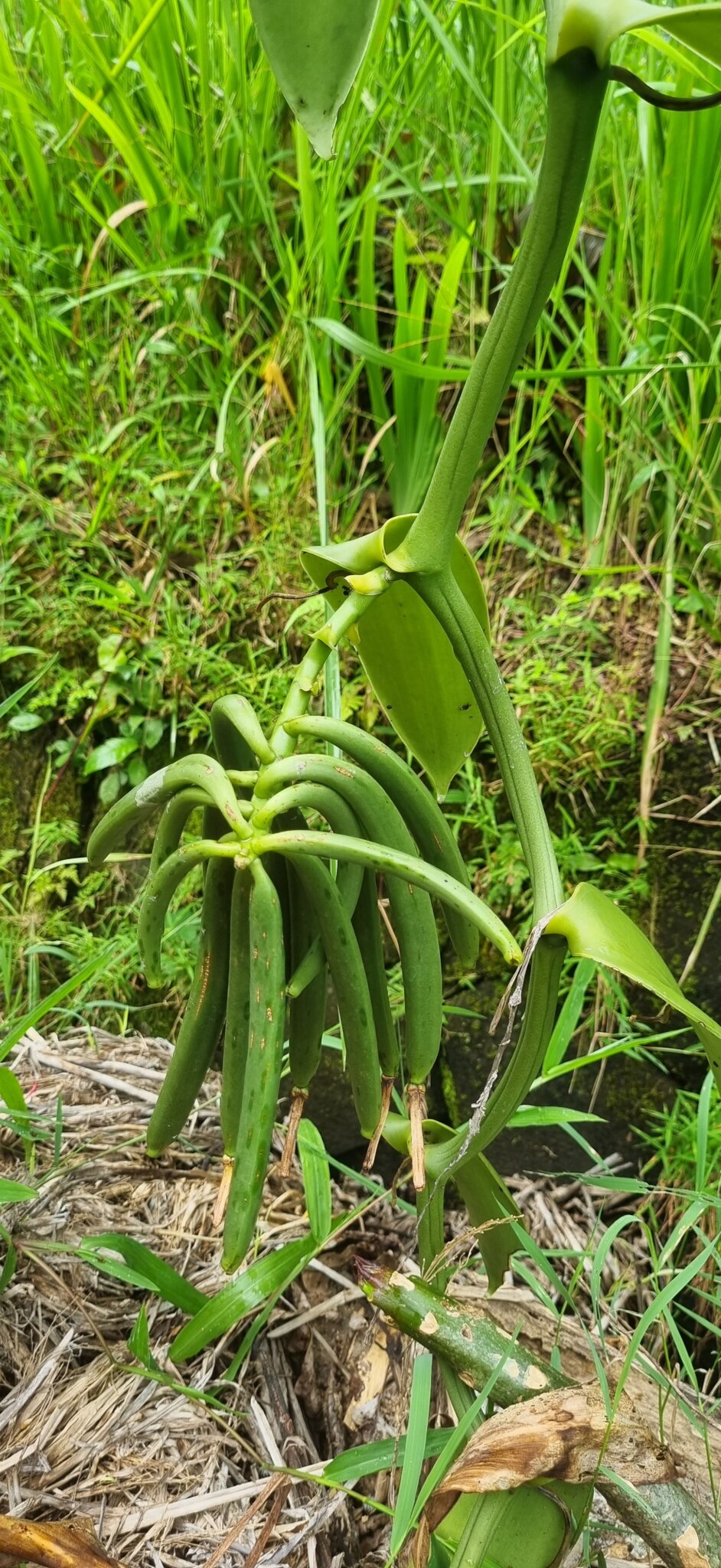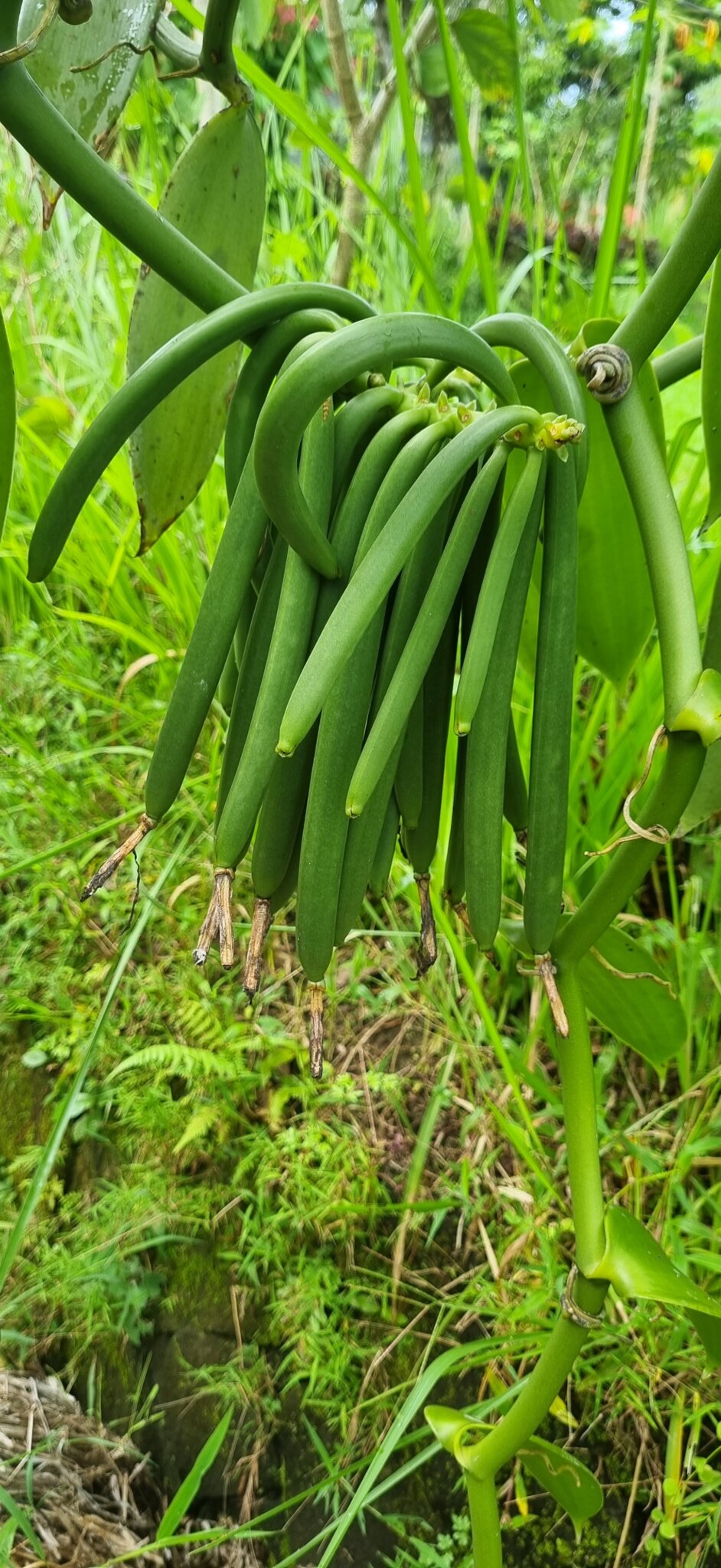
This has been a confidence boosting month.
First, against all odds, the vanilla is continuing to make new flowers. It is really looking like quite a few good quality vanilla beans will be ready by the end of the year.
Secondly, in conversation with a vanilla expert, he mentioned that he had no problem with the idea that a mature vanilla vine, which is really a collection of vines on one host tree, could produce 10kg of green vanilla a year. This is heartening in the light of many doubters and our original estimate of 5kg. The old vanilla farmers in this area also forecast 12kg per plant.
So, it looks as if our projections are undervalued, at least as far as yield.
On the world stage there are contradictions. First, Madagascar has set a floor price of $250 per kilo. But the big buyers are complaining and there are stories about poor Madagascan quality and over-supply.
I suspect the truth is that Madagascar saw a lot of new entrants to growing vanilla, with the predictable result that there are masses of low-quality vanilla on the market which cannot sell. So predictable, that I said this would happen two years ago. Of course, the big American buyers don’t really care about quality as long as it is cheap. So, they actively try to push the price down and make the vanilla a commodity – without much grading.
This is not our market.
Our market is centred in France, who do care about quality and seek gourmet vanilla. That is what we aim to produce.
What we are producing right now is not gourmet vanilla, because it is from our young, immature vines. Often after being savaged by a cockatoo. Vanilla which suffered in the rain would flower. But the vast majority of the vines are becoming stronger and getting ready to flower in September, when we should have some good strong vanilla produced. Much of the current flowering is on strong vines, just confused by the weather.
I attach two photos from my experimental garden of a vine too close to a padi field, so some of the roots have rotted. You can see poor vanilla on a stressed branch, and healthy vanilla on a strong branch. All in one vine.


We are part way through our quarterly survey of the gardens. These surveys are designed to allow us to forecast the crop a year in advance and more. We are not there yet, but there are indications which look very good. We won’t really know how accurate these figures are for another year, but at present we have the gardens on course for 3 year results, with a couple of minor gardens behind. Hard to be more specific, because it is only a partial survey so far. We will forecast the crop from the number of hanging branches we have in September, and most of these we won’t cut until July. Each hanging branch should produce about 700g of green vanilla. Potentially a lot more with our increased height, but we just don’t know what the yield will be on these higher vines. Estimates, even conservative ones, are encouraging. They have as many as three times as many leaf nodes where flowers form.
With the end of the rainy season the vanilla is growing fast and we are now moving a theory from the lab to the field. We are allowing a vine to grow up to 4m high before falling back to the ground. This causes the vanilla to be much bigger and stronger, a sort of reverse bonsai effect – usually vanilla is effectively bonsaid. We have an AB test, in that 25% are being pruned at the top. We are looking to see if this encourages more branches to form. We aren’t certain whether the extra branches come automatically when the branch falls back to the ground or whether it needs encouragement.
Incidentally, the vines in Garden 5B are being subjected to this treatment and they are spectacular for just over a year old. It seems that the methods we developed during the constant La Nina rains are effective at improving growth in normal weather as well.
The building work of turning the ponds into a continuous river is complete, and the lobsters are busy destroying the vegetation faster than we can plant it! This week we shall be doing some sortation work, as we have orders for 100g lobsters and they need to be in the finishing ponds. We shall be moving the lobsters, sorted by size, into other, well-grown ponds and allowing the current tanks to build up a decent head of weed.
We did put the weeds into pots. The lobsters love this. They can destroy all the weed in a pot within days. So, now we are putting some earth in the pond and planting the weed direct to that. The weed flourishes, but we shall have to beware the taste of the lobsters isn’t adulterated.
We notice that a number of adult lobsters in a pond prevents many dragonfly larvae, so they clearly eat them. Sadly, I think they are cannibalistic of their own babies as well, so mixed ponds aren’t the immediate triumph one might hope.
The first spirulina test failed, too much water. The second is working, but the spirulina is a bit brown. Not sure why, but we are adding aeration and that seems to help. My wife is horrified by my experimentation and to discover that organic spirulina is raised on urine. Now, all the equipment for it has been banned from the kitchen, for some reason. Neither am I allowed to use beer bottles to store the urine.
We have finally managed to get a Xendit internet payment gateway account, which will shortly power payments in the online shop on our website. This means we can use our website to raise capital in small quantities (people buying single shares without needing to speak to a human). Apparently, this is going to be enormously successful. I don’t mind – we need another 20 investors on average to take us to harvest. I would prefer 30 as that means we get a laboratory!
The shop working also means we can sell vanilla directly. We shall sell within Indonesia and to Singapore, where there are good and reliable courier deliveries. Currently the retail price in Singapore is SGD 326, Rp 3.5 million. This is better than we can get in Indonesia and better than the export price. We shall start working on this at the end of the year.
Best wishes,
Rex Sumner
Chairman at PT Royal Spice Gardens
Royal Spice Gardens is an Indonesian Foreign Investment Company, in Indonesia known as a Perusahaan Modal Asing (PMA).
NIB Licence number 0220100502286. NPWP: 94.830.504.0- 905.000.
PT Royal Spice Gardens Indonesia, Jl. Raya Pejeng, Tampaksiring, Gianyar, Bali 80552, Indonesia
Website by Simia Solutions / Cre8 Design Studio
Powered by Pak Kriss’s Compliance Framework.
Even in uncertain times, credible, stable & realistic opportunities are available for the astute investor.
Get the edge by obtaining clear, concise and rapid information. Fill out the form to receive our latest prospectus!